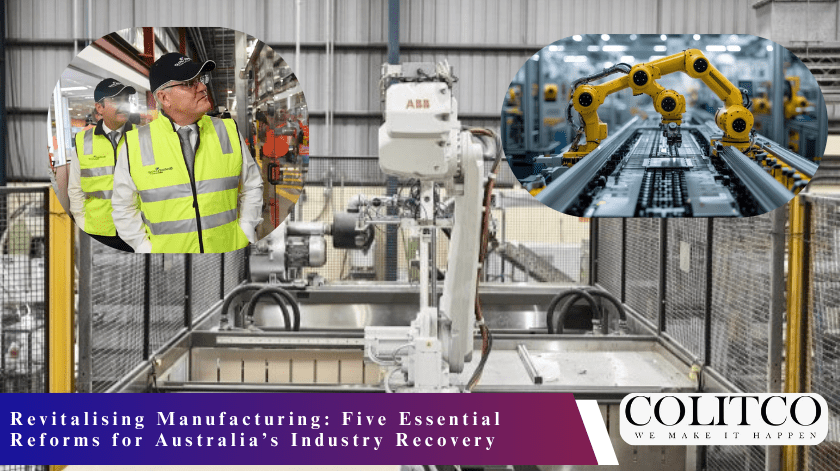Australia’s manufacturing sector faces urgent challenges despite its critical role in the economy, demanding swift reforms to ensure its sustainability and growth. The sector contributes significantly, generating $137 billion in value-added output and employing 930,000 people, accounting for 6 per cent of Australia’s GDP. However, production has declined in recent months, indicating structural weaknesses that require decisive government and industry action for recovery.
Economic Context and Current Challenges
Manufacturing output in Australia decreased by 3.8 per cent in June 2025 compared to the previous year, reflecting ongoing difficulties in production volumes. This drop follows fluctuations in broader industrial production and mining, signalling the need for strategic reforms to revitalise the sector. Despite these setbacks, the manufacturing division’s turnover rose 7 per cent in September 2025, showing potential for growth if supported correctly.
The sector’s transformation is further slowed by skills shortages, supply chain vulnerabilities, and rising energy costs. Government initiatives have begun to address these issues with substantial funding directed at innovation and sustainability, yet more targeted reforms remain essential.

Manufacturing sector of Australia in 2025
Reform One: Strengthening Workforce Capability
Addressing skill shortages is paramount. The sector struggles with recruiting and retaining qualified workers, affecting productivity and innovation. Investment into apprenticeships, technical training, and partnerships with educational institutions is necessary to equip the workforce with modern manufacturing skills. Digital literacy and leadership development programs will provide long-term improvements in workforce capability.
Reform Two: Enhancing Supply Chain Resilience
Australia’s manufacturing depends increasingly on robust local supply chains. The COVID-19 pandemic and geopolitical factors exposed critical weaknesses in supply networks, leading to disruptions and cost increases. Reforms should prioritise developing domestic supplier networks, reducing reliance on international supply chains, and improving logistics efficiency. Collaborative efforts between manufacturers and suppliers can strengthen communication and risk management.

Australia’s Supply Chain Capabilities
Reform Three: Accelerating Technology Adoption
Manufacturers must urgently adopt Industry 4.0 technologies such as AI, robotics, and the Internet of Things to increase productivity and competitiveness. Real-time data analytics, automation, and smart factory systems improve quality control and operational efficiency. The government’s $22.7 billion Future Made in Australia plan aims to accelerate this transformation by supporting high-tech manufacturing capacities aligned with net-zero commitments.

Reform Four: Increasing Energy Security and Sustainability
Energy costs and carbon reduction pressures significantly impact manufacturing. Increasing investment in clean energy projects, energy efficiency, and green technologies will reduce operational costs and environmental footprints. Government grants supporting hydrogen production, battery manufacturing, and renewable energy infrastructure highlight opportunities for sustainable manufacturing growth that must be fully leveraged.
Reform Five: Simplifying Regulatory Frameworks
Complex regulations hinder manufacturing expansion. Streamlining approval processes, especially for innovative manufacturing and modular construction, can reduce build times and costs. For example, recent NSW reforms introduce single approval pathways for prefabricated buildings, which industry leaders praised as crucial to removing barriers in construction manufacturing. Nationwide adoption of such reforms will improve efficiency and investment attraction.
Also Read: Brunswick Property Listing: Rare 99-Year-Old Home For Sale After 53 Years
Government Support and Strategic Initiatives
The Australian government’s commitment of $22.7 billion over ten years under the Future Made in Australia agenda signals a strong policy shift. This funding targets green metals production, advanced manufacturing innovation, and local supply chain development. The plan encourages private sector investment and aims to build resilience against global economic uncertainties through sovereign manufacturing capabilities.
Moreover, states like NSW have set ambitious manufacturing targets focusing on local production competitiveness. These targets align with national goals to capitalise on emerging global markets and push technological innovation.
Outlook and Industry Importance
Manufacturing remains vital to Australia’s economy, creating nearly one million jobs and driving exports. Its evolution depends on urgent reforms paired with continued investment and innovation. By addressing workforce challenges, supply chains, technology uptake, sustainability, and regulatory barriers, the sector can regain momentum and secure a sustainable future.
Monitoring monthly data reveals increased business turnover and signs of recovery, but these gains require sustained support to translate into long-term growth. The sector’s success influences Australia’s broader industrial capability and economic health, making immediate reforms essential to preserve competitiveness globally.
In conclusion, Australia’s manufacturing sector stands at a critical juncture. With strategic reforms focused on workforce, supply chains, technology, sustainability, and regulation, the sector can overcome present challenges and contribute robustly to the nation’s economy in the years ahead. The government’s ongoing support and industry cooperation remain decisive factors in this transformation.











